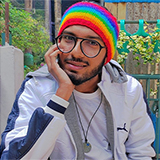Kolkata hears the story of Bo Thet Htun, whose films got him expelled from Myanmar - GetBengal story
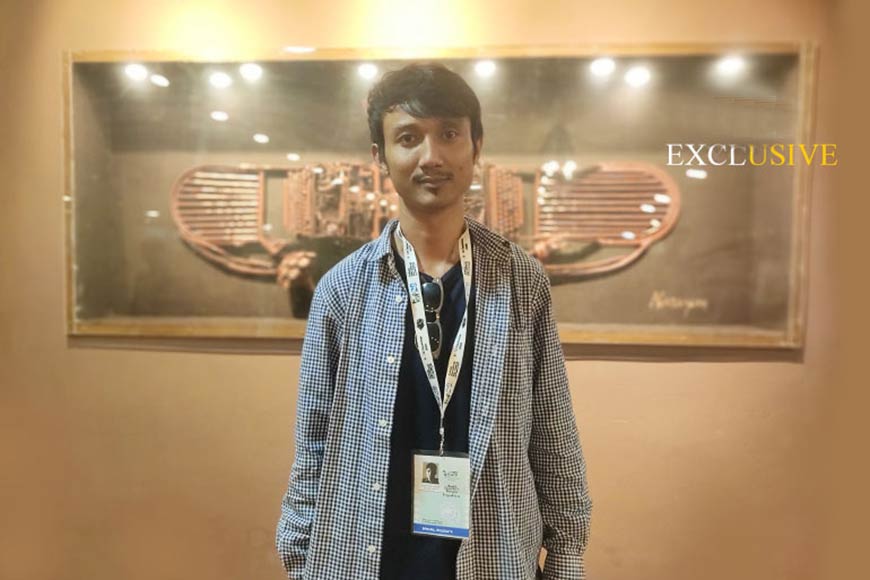
Director Bo Thet Htun, Myanmar
At 36, Bo Thet Htun is a young filmmaker, whose work the city had a chance to watch thanks to the 29th Kolkata International Film Festival’s NETPAC Award section. And at the end of the screening, a packed Rabindra Sadan broke into thunderous applause as the filmmaker, in traditional Myanmarese shirt and longyi (from the Bengali lungi or sarong) walked out on to the stage.
Essentially a documentary filmmaker, Htun tends to focus on human rights and related issues, though Myanmar’s military junta has been on the hunt for him ever since his latest documentary on the nation’s military coup went public. Now in self-imposed exile, Htun calls Thailand his temporary home, and the army did raid his actual home in Yangon soon after he had left the country.
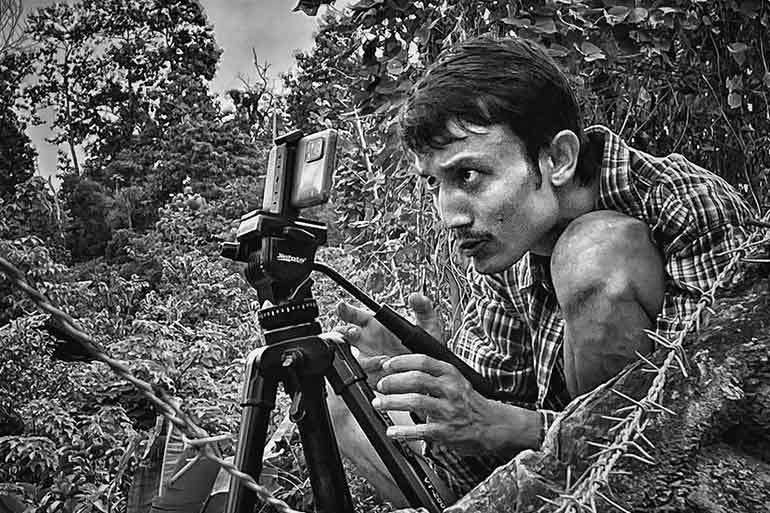 The director is capturing footage using a mobile camera
The director is capturing footage using a mobile camera
I met Htun a week or so ago on December 6 at Nandan I, where I was waiting to watch an Australian film. Introduced to Htun by noted Bangladeshi filmmaker Syeda Neegar Banu, I sat transfixed as Htun told me about his horrific life experiences, and how he had put his life on the line for the sake of cinema. While comfortable talking about himself, he understandably refuses to talk about his family, who are still at risk.
A total of eight filmmakers have come together to make nine short films, which have been stitched together to produce the full-length film Broken Dreams: Stories from the Myanmar Coup, talking about life and death in Myanmar. Remarkably, nearly 80 percent of the film has been shot on a Xiao Mi 11 Pro phone camera.
Kolkata was witness to the appalling story on World Human Rights Day, December 10, before which GB had a chance to speak to Htun in an exclusive, thought-provoking, candid tête-à-tête:
Your film was part of the NETPAC competitive section. How would you describe your first time in Kolkata? The film festival, the people, how have they contributed to your experience?
We are really proud to have been part of KIFF, one of the largest film festivals in India. And the audience here has been extremely enthusiastic about Broken Dreams, so it was very satisfying to be able to show them our film. Personally, I’m also overwhelmed by the theme and the various activities at KIFF. Kolkata audiences really know how to honour cinema.
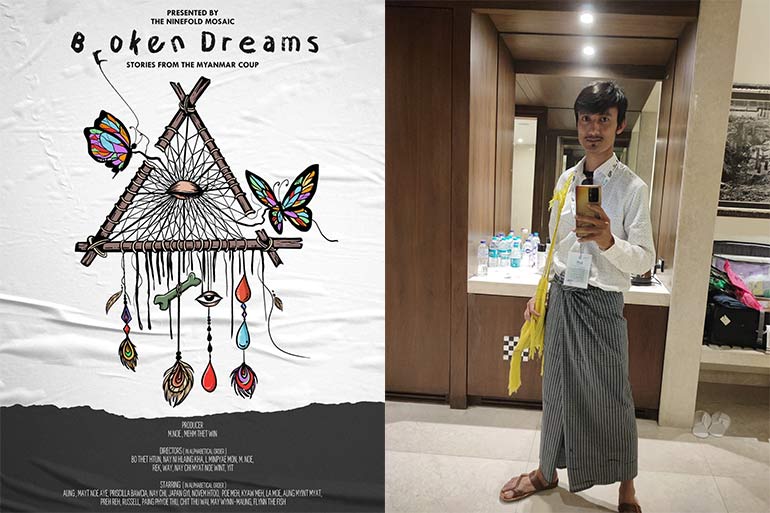 Poster of 'Broken Dreams' (on the left), and the director clad in attire from their own country (on the right)
Poster of 'Broken Dreams' (on the left), and the director clad in attire from their own country (on the right)
Since eight of you have made Broken Dreams, could you briefly describe the principal narrative to us?
Broken Dreams is a full-length anthology film made up of nine shorter films, talking about the 2021 military coup in Myanmar. The basic narrative is centred on people who have to go through daily struggles ranging from losing loved ones to being prevented from expressing their thoughts and opinions. Each narrative has a different perspective.
The eight of us wanted to say something about the current situation in Myanmar. Though we had to shoot under extremely trying circumstances, our film has drawn the attention of film critics, and has also been awarded at quite a few international film festivals. This is a film about our predecessors, about the human sensibility behind the people’s uprising. Most importantly, this is a film whose creators – directors, actors – are mostly exiled from Myanmar for having participated in the uprising.
Can you tell us a little more about the crisis in Myanmar, or the lack of freedom of expression? If the situation is indeed this grim, how did you manage to work together?
I left home in November 2021. And I have been completely honest about the fears, uncertainties, and internal differences among the groups opposed to the military junta. Let me tell you something. According to the United Nations, more than 20 lakh Myanmarese are currently in exile. More and more soldiers are now joining the revolutionaries because even they can no longer bear the dictatorship.
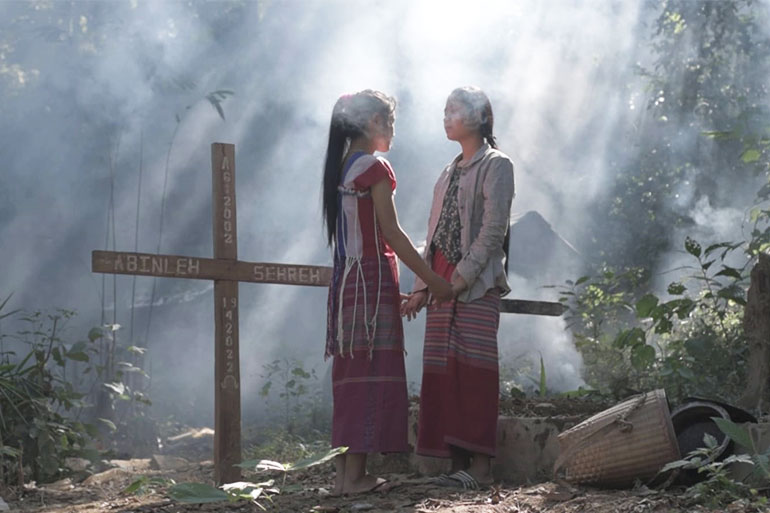
Broken Dreams presents the agony of the people of Myanmar, two years after the uprising. It is literally about the dreams that were shattered after the military coup. It will be easier for you understand if I put out a few points – the cycle of oppression and revolt, the effects of post-traumatic stress disorder (PTSD), individual battles against oppression, the impact of one blow after another, families broken by military action, the sheer cruelty of a dictator, the terrible plight of refugees – all of these find place in our film.
We are all fighting for democracy, and for us, the medium is cinema. We want as many people as possible to watch it.
What about cinema in Myanmar in general? What are independent filmmakers doing right now?
Post-2021, the Myanmar film industry has been split in two. One group are still trying to independently express their views against military rule, and often paying a social price for their courage as they struggle for survival. The other group of filmmakers are making publicity films for the dictatorship, and a few are silently continuing to work under the strict censorship guidelines.
But work is also on to create a free, unrestricted space outside the reach of the military rulers, where both independent and mainstream filmmakers are working together. Broken Dreams is one such project, in which many well-known and established artistes have come together, all of whom support the revolution.
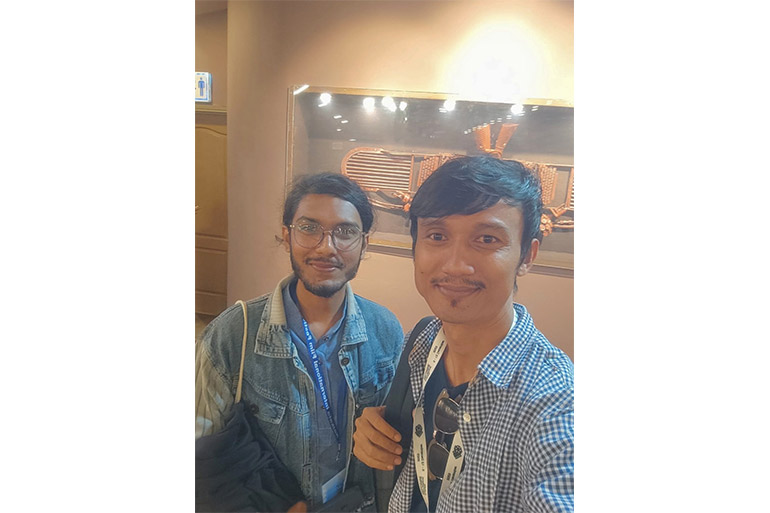
Your own short film in the anthology is titled Dancing in the Dark, about the Internally Displaced Persons (IDP) camp. Two of your female actors are actual refugees. How was the experience of working with them? Why did you decide to work with refugees?
My wife and I lived in a refugee camp for a few days while shooting a documentary, which is when I first heard the story of how a woman escaped the war, from the woman herself. That was the inspiration for Dancing in the Dark. We prepared for nearly four months, and realised it would be practically impossible to get a professional actor to walk outside on the road, or act, in those circumstances. So I chose real-life refugees and luckily for me, many of those at the camp were lovers of cinema. We used real footage of people in exile, memorial meetings, and air strikes. I think the reason I was able to capture their lives and emotions so well was because I lived, slept, and ate with them.
Who would you call your favourite international filmmaker? Have you had a chance to ever watch a Bengali or Indian film?
It’s really hard to pick a favourite. There are so many directors whose work I love, who help me carry on. And while I’ve seen plenty of Indian films, I have only recently learned about the Bengali film industry. I now know that you have filmmakers like Satyajit Ray, Mrinal Sen, Ritwik Ghatak, Tapan Sinha, and many others who have placed Indian cinema on the international map.







